 |
| Lee Krasner in her New York studio, c 1939: ‘She didn’t suffer fools.’ Photograph: Photograph by Maurice Berezov |
Reframing Lee Krasner, the artist formerly known as Mrs Pollock
Lee Krasner’s huge contribution to abstract expressionism was overshadowed for years by the work of her husband, Jackson Pollock. On the eve of a major London show, we trace her story
Rachel Cooker
Sunday 12 May 2019
In the autumn of 1945, two artists – not young, but not quite middle-aged, either – moved from New York to a village called Springs, near East Hampton on Long Island. These newlyweds had no money. It would be a while before they could make the small clapboard farmhouse that was to be their new home any less freezing in winter, let alone install an indoor bathroom. But this isolated spot, with its ramshackle outbuildings and its view of the Accabonac Creek, was for them a bit of heaven – in the beginning, at least. Together, they cooked and gardened. Together, they went digging for clams, travelling to the beach on their bicycles (they did not own a car). Above all, they worked: he in their barn, she in an upstairs bedroom. Life was, for them both, mostly about painting. Their allegiance to it was fierce: as intense as their loyalty to each other, from which it could never fully be separated.
One of these artists, Jackson Pollock, would one day become very famous – the hard-living central figure of American abstract expressionism, known the world over for his drip paintings, made by allowing the paint to drop from his brush or a can on to a canvas laid on the floor – and, thanks to this, the house is now a US historic landmark, open to the public. It’s an intensely special place. I know I’m lucky: when I visit on a crisp, blue-bright April morning, its director, Helen Harrison, has opened up specially for me. But I’m also certain that even if there were a crowd here, it would still cast a spell. The atmosphere is so intimate. You half expect to smell onions frying, or to hear the fuzzy crackle of a needle hitting a jazz record. In the kitchen, a pair of greasy oven gloves still hang on a hook. On the stove sits a kettle, waiting to be boiled. On top of the refrigerator are the china pots, decorated with windmills, in which the couple kept their sugar and their rice, their pepper and their cloves. People have made a lot of Pollock’s macho tendencies down the years, but he was a keen baker; if he wanted to eat an apple pie, he would get on and make one.
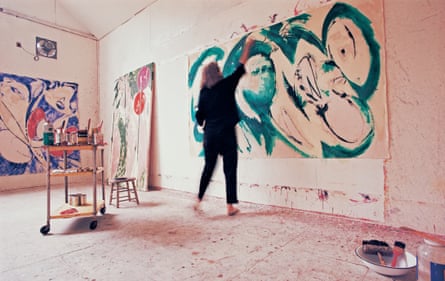
But it’s not Pollock I’m interested in today. I’m looking for traces of his extraordinary and prodigiously talented wife, Lee Krasner, a major retrospective of whose work will open at the Barbican Art Gallery, London, later this month. The first Krasner exhibition on this scale in Europe since the 1960s, it will present a rare opportunity for those interested in her work in particular, and in American abstract expressionism more generally. In the UK there is only one Krasner in a public collection (Gothic Landscape, from 1961, held by the Tate); the Barbican will show nearly 100 works, many of them on view in Britain for the first time, and one that has never been seen before in Europe (the 4m-long Combat, from 1965, a canvas that is unlikely ever to make it here again from its home in the National Gallery of Victoria, Melbourne). Also on display will be images from a newly discovered cache of photographs of the artist at work and at play taken by her close friend, the designer Ray Eames (they met as art students) – pictures that illuminate her practice in a variety of unexpected ways. “Hers is a great story of tenacity,” says Eleanor Nairne, the curator of the Barbican’s show. That is true. But if Krasner looks stubborn in these photographs, she also looks playful: such an unlikely looking artist, in some ways, painting wildly in her full skirts and her ballet pumps.
Nairne’s survey of Krasner’s 50-year career is likely to be both enthralling and salutary: the former because the work, often pioneering and always highly singular, is so abidingly good (as William Lieberman, a curator at the Metropolitan Museum of Art in New York, put it after her death, Krasner “painted in the modern idiom when Jackson was still in the regional style…”); the latter because her story is an object lesson in the way women have so often been smoothly written out of the story of modern art. Krasner was 75 before she finally got anything approaching her due – her first American retrospective, staged at the Houston Museum of Fine Arts in 1983 – and even now remains little known compared with her husband and such contemporaries as Willem de Kooning and Mark Rothko. When I told friends I was writing about her, more than one confused her with Lee Strasberg, the father of method acting.

Pollock and Krasner came to Springs in the hope that it would put paid to his drinking – Lee had, on these grounds, finally persuaded his gallerist, Peggy Guggenheim, who was proprietorial about Pollock and rather disliked his new wife, to lend them $2,000 as a down payment to buy the house – and for a time, it did. But this sobriety would not – could not – last. Pollock was killed in a car accident, having taken the wheel while drunk, in 1956, at the age of 44. Though he and Krasner were by then somewhat estranged (he’d been having an affair with a younger painter, Ruth Kligman, who survived the crash that killed the artist and his other passenger, Edith Metzger), she was overcome with grief; there are those who believe she never fully recovered from the shock. But she did not leave Long Island. Krasner lived and worked at the house at Springs, splitting her time between it and a small apartment in New York, until her death in 1984 – and in those three decades, she made it her own.
Upstairs, in the bedroom they once shared, she suddenly appears before you as a woman alone rather than one half of a couple. This is her realm, and hers only, colonised with her stuff to an almost girlish degree. By the window is her beloved shell collection, of which Ray Eames took many closeups. On the bed is her bathrobe, a pool of plum-coloured silk. Harrison opens a drawer in a bedside table. Here are Krasner’s pills, a sewing kit, some corn plasters. Also, a packet of cigarettes. “Actually, those belonged to [the actor] Ed Harris,” she says, with a smile. “He slept here when he was doing research for the movie.” (Harris played Pollock in a 2000 biopic, a performance for which he was nominated for an Oscar.) More significant than any part of the house, however, is the barn. Soon after they came here, Pollock moved this building, which was impeding their view, to one side of their home. Installed inside it, he set about making his “drip” pictures, the paintings that in 1949 caused Life magazine to ask its readers if he might be the greatest living artist in the US.
After his death, Krasner worked right through the first blast of grief, picking up her brush again just two weeks after his funeral, and in the summer of 1957 she took over his studio, abandoning the tiny bedroom where she’d worked previously. “There was no point in letting it stand empty,” she explained. It was spacious, and it had the best natural light. More importantly for her peace of mind, the original barn floor on which her husband had worked, densely patterned with sprays of his paint, had been covered with Masonite boards since 1953 (after this act of erasure Pollock, disturbed by his fame and drinking heavily, had never really painted again).
These days the floor is uncovered, Pollock’s splatters once more revealed in all their dynamic glory. But in every other way, the studio is exactly as it was when Krasner took it over: the start of what would be a highly productive period for her. “It’s mind-boggling,” says Harrison. “Straight away she does this wonderful, colourful, upbeat work. Painting was her antidote to grief.”
On some shelves are powder pigments left over from the federal art project, a programme instituted by the Roosevelt government for the employment of artists during the war as part of the New Deal, for which Krasner and Pollock both worked. In a series of tin cans are the strips of coloured glass she used to make mosaics. It was on the walls of this studio that Krasner tacked the huge canvases that would become known as her “Night Journeys”, the biggest pieces she had ever produced. Making these pictures, which have dramatic titles (Polar Stampede; Assault on the Solar Plexus), involved her whole body, since she had to leap from the floor with a long-handled brush in order to reach their farthest corners. It was almost as if she had unfolded herself. Henceforth, she could work on an unprecedented scale.
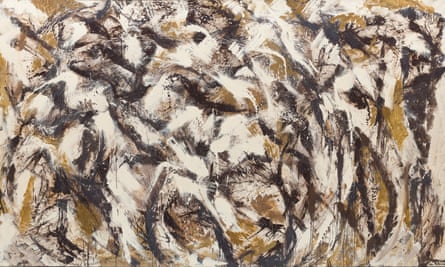
Did Harrison meet Krasner? “Yes. First, when I was writing about art on Long Island for the New York Times, later when I became the curator at our local museum, the Guild Hall.” What was she like? “She had a reputation for being short. When I started at Guild Hall, I was told that Mrs Pollock was on the line, and when I picked up the phone, before I could even say ‘Hi, Lee’, she started in on a rampage. ‘I have just received an invitation from you,’ she said. ‘And it says Mrs Jackson Poll-ACK. Well, I deserve better than this!’ She went on and on.”
Krasner, says Harrison, was thin-skinned at some moments, and had a hide like a rhino at others. But if she was tough, it was because she needed to be: “She’d had to put up with all this bullshit from the critics, and the dealers, and all the rest.”
Harrison drives me to Green River Cemetery, the somewhat starry spot where Krasner is buried (Elaine de Kooning, Frank O’Hara, Jean Stafford and Harold Rosenberg also lie here). Her headstone, like Pollock’s, is made from a rough granite boulder, unpretty and uncompromising, although smaller. It makes you think, again, about their relationship. Did he keep her down, her boozing husband of legend? Or was theirs that rare thing, a full creative partnership, albeit one determinedly ignored by the (male) critics of their day? Why is it that, even now, she remains vastly less famous than him?
Krasner was born in New York in 1908, the daughter of Russian, Yiddish-speaking Jews who had fled their shtetl outside Odessa (her father ran a fruit and vegetable stall). She was named Lena Krassner, but in 1922 she adopted the more American “Lenore”, and later this would become the androgynous “Lee”; she also, at some point, dropped the second “s” from her surname. That wasn’t an unusual thing for someone from an immigrant family to do, but it was also all of a piece with her taste for reinvention, her sense that she had a vocation and would go her own way irrespective of what her parents thought. As a teenager, she was determined to attend the only public school that offered an art course for girls (she got into Washington Irving High on her second attempt, and made a daily two-hour round trip between Manhattan and Brooklyn), and thereafter she enjoyed a remarkably full art education. “No American could have had a better one in the 30s,” according to the critic Robert Hughes.
An academic grounding at the Art Students League in New York was followed by practical experience on the Works Progress Administration murals in the 30s (another part of Roosevelt’s New Deal) and, finally, three years under Hans Hofmann, a famed teacher who’d known Matisse, Mondrian and Kandinsky.
Krasner’s parents, she later said, “didn’t encourage me, but as long as I didn’t present them with any particular problems, neither did they interfere” – though there was one family controversy in which she was involved. In 1928 her older sister, Rose, died suddenly; according to the custom, she was required to marry Rose’s widower. Krasner refused and the responsibility fell to her younger sister, Ruth. After that, the two women had a difficult relationship.
At the end of the 1920s, Krasner fell in love with a Russian émigré artist, Igor Pantuhoff; by 1935, they were sharing an apartment in the East Village. In 1940, however, he wrote to her from Florida, where he was staying with his parents, to say that he would not be returning. She was devastated, but it didn’t stop her working – nothing ever did – even if she was then struggling under the influence of Hofmann and his cubist style, later referring to the work she produced during this period as her “grey slab paintings”.
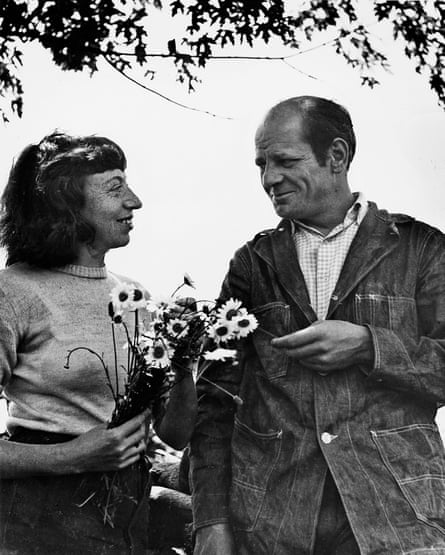
But then there came a thunderbolt. The work of an artist called Jackson Pollock had been exhibited alongside her own (as well as canvases by Braque and De Kooning, to whom she later introduced Pollock). Much taken with it, she dropped by his apartment, hoping to make the acquaintance of this man who looked – as De Kooning would later put it – like “some guy who works at a service station pumping gas”. Things moved quickly. “When I saw his paintings, I almost died,” she said in 1958. “They bowled me over. Then I met him, and that was it.”
Krasner believed in Pollock’s genius, a conviction that never wavered. She knew about his drinking, though not, perhaps, of the self-destructive violence it sometimes stirred in him; a friend would later say that living with him was like living with a powder keg (before the accident that killed Pollock, he ran more than one car off the road; towards the end, troubled and frustrated, he would often turn his rage on Krasner). She wanted to take care of him, to help find him the space he needed to work. The only thing she ever really refused him was the child he claimed to long for (she said later that she thought of him as the child in their family – and in any case she “married him to become an artist, not a mother”). But that isn’t to say that his demands blotted out her needs, or her ambition. They never did, not least because he believed in her too. (When he visited her Ninth Street studio for the first time, his response to her work was, she felt, sympathetic.)
“The stories around him are raucous,” says Eleanor Nairne. “But those dramas have tended to overshadow a remarkable relationship. If there was a deference there, it was mutual. For instance, they would only visit one another’s studios by invitation. From the start, I was determined not to put together a straightforwardly feminist, revisionist interpretation of her career, because it wasn’t a case of him stopping her working. He was the one who stopped work, not her.” In 1955, as Pollock was falling ever deeper into his alcoholic abyss, his wife took comfort in the collages she was then making: images, made from shreds of her own discarded work, that many people feel to be among her greatest achievements. Meanwhile, unable to paint and increasingly desperate about it, Pollock broke his ankle while wrestling with the painter Sheridan Lord on his living room floor. Krasner, moreover, felt that in some respects being overlooked – by the critics and the galleries, if not by her husband – was a blessing. It gave her a certain freedom. “I’m not sure we should apply our own expectations to her career retrospectively,” says Nairne. “That may give us a reading, particularly in terms of the way we see 1950s domesticity, that is, in their case, not very accurate.”
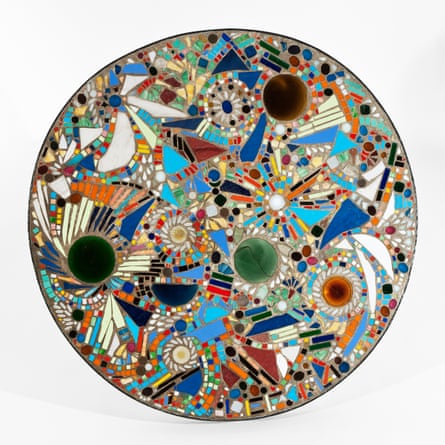
As the years went by, efforts would be made to place Krasner’s career at centre stage. In 1965 the Whitechapel Gallery in London held a retrospective; there was a show at the Whitney in New York in 1975, and (after her death) a retrospective at the Museum of Modern Art in New York in 1984. But still, she remains too little known. Why? It hasn’t only to do with the vicissitudes of her life with Pollock, and the way these have been exaggerated, even caricatured, in books and films. In part, she was just another a victim of the times.
The female artists of the 1940s and 50s were, as Robert Hughes once noted, trapped in a sort of cultural apartheid, the “ruling assumptions about the inherent weakness and silly femininity of women painters almost unbelievably phallocentric”. But she was also, according to her biographer Gail Levin, caught in the gap between two generations of painters: “She was ignored in terms of the first generation of [male] abstract expressionists – too often, she was just Mrs Pollock – but because she was a little older than them, nor did she get the same attention as the next generation, who were feted as these glamorous women painters: Helen Frankenthaler, Grace Hartigan, Elaine de Kooning, Joan Mitchell.”
Later, Krasner would understand that she was a beneficiary of the efforts of feminist art historians such as Linda Nochlin who were determined to expand the canon – in 1972 she even joined a picket outside the Museum of Modern Art protesting at its neglect of female artists – but like many women of her age, she did not consider herself a feminist, and was reluctant even to think of herself as a female artist. “She had no interest at all in the idea of feminist art,” says Levin, with a laugh. “Judy Chicago [who liked, among other things, to incorporate the vulva into her work] would have meant nothing to her!”
A further problem stems from the work. While the male painters of her generation – De Kooning, Rothko, Motherwell – developed highly recognisable signature styles, Krasner worked in cycles, only to then move on to something entirely new. “She had a lot of ideas,” says Levin, almost wonderingly. Nairne agrees: “She believed art was an expression of the inner self. To have a signature image would be to suggest there was no contingency in life.”
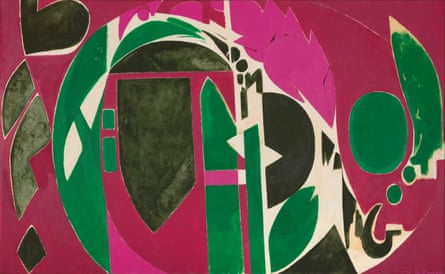
She was also a ruthless editor of her work. “There isn’t a lot of her around,” says Krasner’s nephew, Jason McCoy, who as an art dealer himself understands the market and the way it builds reputations. “There are enough paintings to establish her control and her power and her vision, but not enough to be, as it were, bandied about. A big part of reputation has to do with the size of the body of work, and hers is relatively small.”
McCoy and I talk in his midtown gallery on a grey New York afternoon. His memories of his aunt, to whom he was close, unspool before me like home movies. He was eight when Pollock, his father’s brother, died, so he knew Lee best as a widow: by the time he was a teenager, he was one of those on whom she called regularly to stay with her at Springs (she hated to be alone at night). “She found me… useful,” he says. “But she liked me, too.” What was life like there? “It was a sophisticated life that I’d known nothing about as a kid growing up in a small town, and it was very flattering because she didn’t differentiate between a 16-year-old and a 36-year-old.”
Krasner was, he says, extremely direct and sometimes slightly scary: “She didn’t suffer fools. Her snappishness was enough to make one nervous. But I completely loved her. The way she said: ‘Marvellous!’ I remember once, when she and Jackson were at our house, and something came up about dinner, and Lee said ‘filet of sole’ – and what she meant was flounder!
“She was an authentic self-invention. She had such style. She was careful about presentation in certain ways. She didn’t care about diamonds, but she had beautiful pearls, just one string. A black Gucci handbag with bamboo handles. Ferragamo pumps. She could pull herself together and go anywhere in her sable coat. She had what she needed, no more. Everything at home was very simple. I can see her now, cutting dill, arranging tomatoes on the window sill until they were perfectly ripe.”
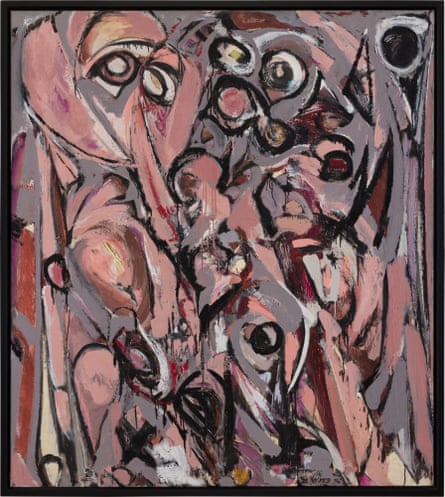
What about her art? Did they discuss it? “She would ask me to the studio. One didn’t just go there. One waited for an invitation. But she didn’t talk about her painting. The most distinct thing for her was the question: does it work? That was the big way that she thought. She wasn’t insecure about it. She wasn’t asking my opinion. She was asking herself.
“She had a very strong conviction about herself as a painter. She saw her own worth. She saw herself as equal to the men. She didn’t have the attention Pollock had, but she’d grown inured to that. Lee knew all about brands: she was Mrs Pollock, and sometimes she took advantage of it. But she also had great feeling for him as a painter. He wasn’t an easy person, but she never disparaged him, and he never disparaged her, either. The most powerful attraction between them was their intellectual acknowledgement of each other.”
McCoy despises the mythology that has grown up around his aunt and uncle. “That movie. The sturm und drang. Marcia Gay Harden of all people [Harden starred alongside Ed Harris as Krasner, a performance for which she won an Oscar]. I mean, get real. Bette Midler would have been better, or Barbra Streisand.”
McCoy had hoped that his aunt would make it to the 1984 retrospective at MoMA, a show she had so longed for, but by then she was using a wheelchair and in a lot of pain – she suffered from arthritis – and after seeing it in Texas, to which it travelled en route to New York, she came home and went to bed, and that was it. She died in June, and in the same month her memorial service was held at the Metropolitan Museum of Art; among those who spoke were Robert Hughes, Susan Sontag, and her friend the playwright Edward Albee (Krasner, he said, always “demanded the quality she gave. She looked you straight in the eye, and you dared not flinch”). The exhibition at MoMA opened in December. “That show was wonderful,” says McCoy. “But even then, she wasn’t recognised – not the kind of recognition that comes from auction records. Things weren’t selling for millions of dollars. I remember being very happy when one of her collages sold for $4m.”
This month, Krasner’s elemental canvas of 1960, The Eye Is the First Circle – one of the “umber paintings” made in the years immediately after Pollock’s death, and one of those works that surely elevated her to the first rank of abstract expressionism – will be auctioned at Sotheby’s. If it reaches its estimate of $10m-$15m, it will set a new sale record for her work. Does this matter? It does if you believe that it is unfair that men continue to dominate the market; that value is, whether we like it or not, measured in numbers. (Though Pollock’s work can still command many times this figure: in 2015, the music mogul David Geffen sold Number 17A, a drip painting from 1948, for $200m). But in another way, it matters not at all – as visitors to the Barbican, where it is hoped this astonishing painting will be on display irrespective of the outcome of the auction, will surely discover.
Krasner found, in this period of her career, a language that was all her own. Here is the inner void her husband famously externalised, turbulent with stress and strain; the splattered world that she knew was literally hidden beneath her feet as she stood on a ladder in what had been his studio. Except that in her rendering, the oil applied with a brush rather than flung or dribbled, chaos and control are held miraculously in balance. In shades of brown and white, this monumental painting brings to mind a river in full spate – and yet, it also represents the quiet after the storm, what Krasner thought of as the coming of the light.
Lee Krasner: Living Colour is at the Barbican, London EC2, 30 May-1 Sept. The accompanying book, Lee Krasner: Living Colour, edited by Eleanor Nairne, is published by Thames & Hudson on 30 May (£35). To order a copy go to guardianbookshop.com or call 0330 333 6846 Free UK p&p over £15, online orders only. Phone orders min p&p of £1.99
Lee Krasner: A Biography by Gail Levin is published in paperback by Thames & Hudson in May (£12.99)


No comments:
Post a Comment